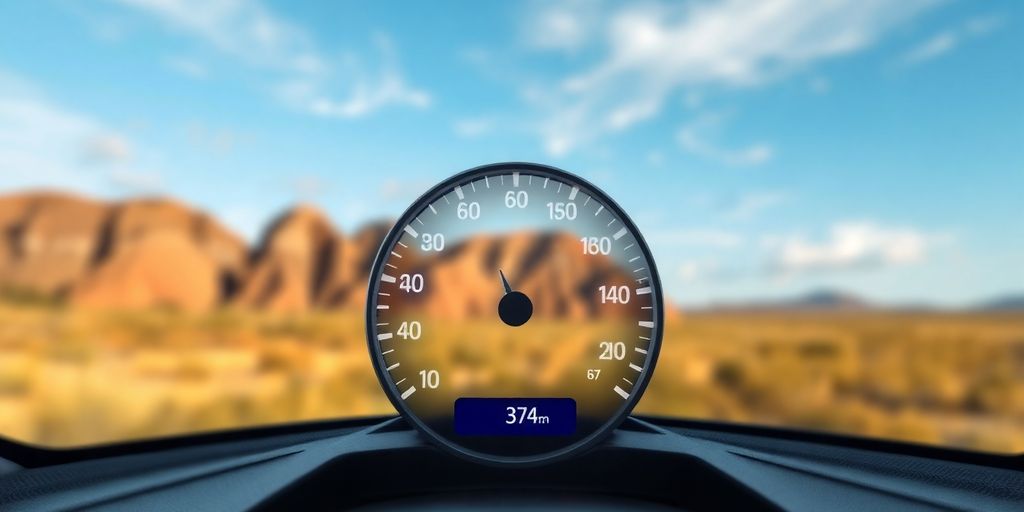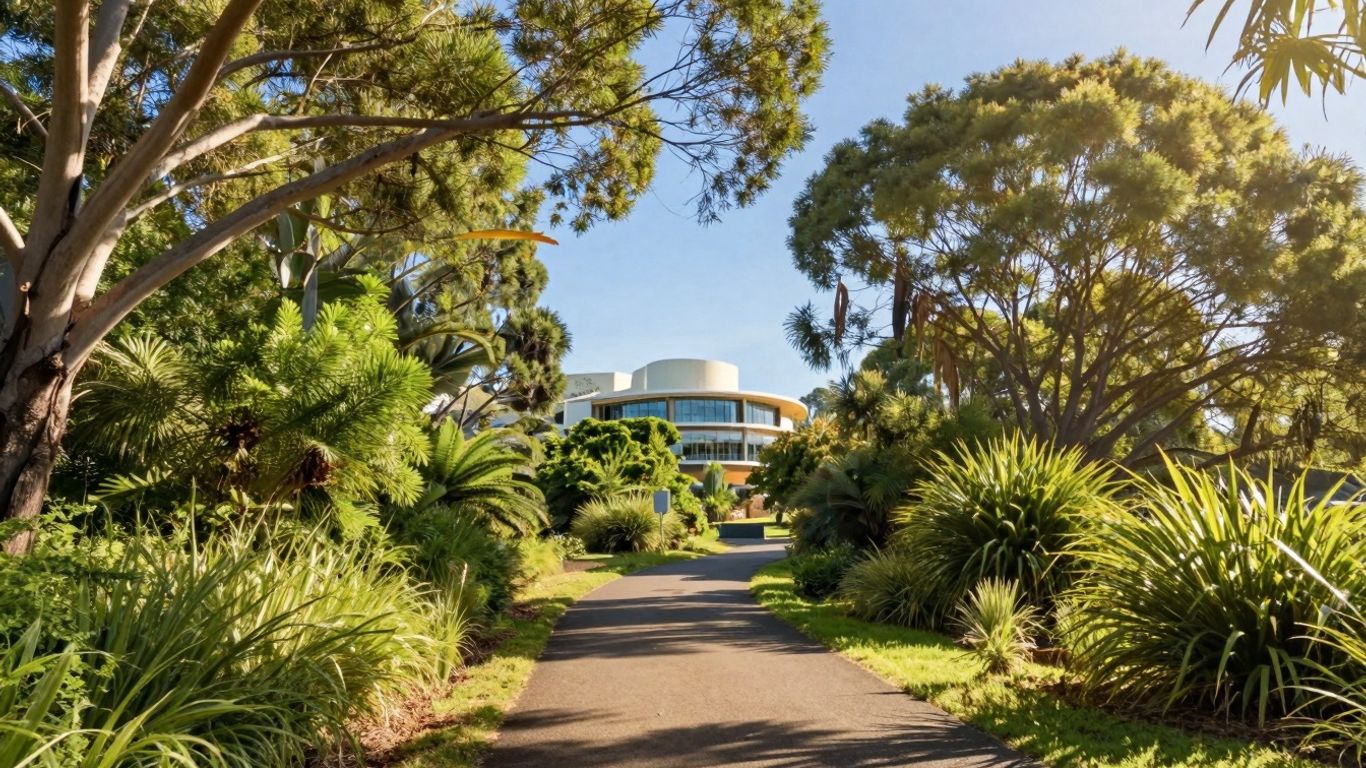So, you’re wondering about the average internet speeds in Australia right now? It’s a fair question, especially when you’re trying to stream your favourite show or get some work done. We’ve had a look at the latest figures to see how we’re stacking up. It turns out, some states are doing better than others, and even the time of day can make a difference. Let’s break down what the numbers say about internet speeds across the country.
Key Takeaways from Australian Internet Speeds
- Queensland is leading the pack when it comes to download speeds.
- The fastest internet speeds are typically seen late at night, between midnight and 4 am.
- Mobile internet generally offers faster download speeds than fixed broadband.
- NBN 50 is the most common speed tier chosen by Australians, though more people are looking at faster options.
- Tuesday seems to be the best day of the week for using the internet, with speeds generally being higher.
Understanding Average Internet Speeds Australia
Right then, let’s get down to brass tacks about internet speeds here in Australia. It’s not always straightforward, is it? We all want that super-fast connection, but what’s the reality?
Key Statistics on Australian Internet Performance
Looking at the numbers, things can vary quite a bit. For instance, back in July 2022, the average download speed for mobile internet across the country was a bit of a mixed bag. While mobile connections often felt zippy for downloads, fixed broadband sometimes had the edge when it came to uploads. It’s a bit of a trade-off, really.
Here’s a general idea of how things stacked up:
- Mobile Download Speeds: Generally good, often outperforming fixed lines for downloads.
- Fixed Broadband Upload Speeds: Tend to be more reliable and faster than mobile uploads.
- Overall Experience: Varies wildly depending on where you are and what plan you’re on.
It’s easy to get caught up in the headline speeds, but the actual experience can be quite different. Think about how you use the internet – are you downloading big files, or just scrolling through social media?
Methodology for Speed Testing
So, how do we even figure out these speeds? Most of the time, it comes down to using specific testing tools. These tools measure how quickly data can be sent to and received from a server. They usually look at:
- Download Speed: How fast you can get data from the internet to your device.
- Upload Speed: How fast you can send data from your device to the internet.
- Ping/Latency: The delay before a data transfer begins after an instruction. Lower is better for things like gaming or video calls.
These tests are often done at different times of the day to get a clearer picture, because, let’s face it, the internet can feel slower when everyone’s online at once. Understanding how these tests are done helps us make sense of the figures we see, like the impressive NBN very high speed services that are becoming more common.
State-by-State Internet Speed Comparisons

When you look at internet speeds across Australia, there are some pretty noticeable differences between the states and territories. It’s not just a little bit different either; some places are getting speeds that are significantly faster than others. This means your internet experience can really depend on where you live.
Queensland Leads in Download Speeds
Queensland has been coming out on top for download speeds lately. People living in the Sunshine State are generally getting faster connections compared to the rest of the country. This is great news for anyone in Queensland who loves streaming movies, downloading large files, or playing online games without much lag.
South Australia and Western Australia Performance
South Australia and Western Australia are also showing some solid performance when it comes to internet speeds. While they might not always be hitting the absolute top spot like Queensland, they’re consistently providing good speeds for their residents. This means most people in these states should be able to get a decent online experience for everyday tasks.
ACT Experiences Slowest Download Speeds
On the flip side, the Australian Capital Territory (ACT) has been reporting the slowest average download speeds. This is a bit of a surprise, given it’s the nation’s capital. It suggests that while other states are seeing improvements, the ACT might be lagging a bit behind. This could mean slower loading times and more buffering for internet users there.
Here’s a quick look at how some states stack up:
- Queensland: Often leading the pack with the fastest download speeds.
- South Australia: Showing strong and reliable performance.
- Western Australia: Similar to SA, offering good speeds for users.
- ACT: Currently experiencing the slowest average download speeds.
It’s interesting to see how these speeds vary. Factors like infrastructure, population density, and the rollout of new technologies likely play a big part in why some areas are faster than others. Keeping an eye on these trends can help you understand what to expect from your internet plan in your specific location.
Peak and Off-Peak Internet Speeds
Ever notice how your internet seems to crawl at certain times of the day? It’s not just you. Like roads during rush hour, internet traffic gets congested too, and that definitely impacts your speeds. Understanding when the network is busiest can help you plan your online activities.
Fastest Download Speeds Overnight
If you’re a night owl, you’re in luck. Our data shows that the absolute best time to get your downloads done, stream without buffering, or have a lag-free gaming session is between midnight and 4 AM. During these early morning hours, average download speeds can really pick up, often reaching their peak. This is when most people are asleep, so there’s less demand on the network. It’s a good time to tackle those big file transfers or software updates.
Slowest Download Speeds in the Morning
On the flip side, the morning hours, particularly between 4 AM and 8 AM, tend to be the slowest. This is when people are starting to wake up, check emails, get their news fix, and generally begin their day online. The increased usage during this period can lead to a noticeable dip in performance. If you’ve got something important that needs a fast connection, it’s probably best to avoid this window if you can. Planning your heavy internet use around these peak and off-peak times can make a real difference to your online experience. For those looking for consistent performance, exploring fixed-line internet speeds in Australia might be a good idea, as they often offer more stability than mobile connections during busy periods.
Mobile vs. Fixed Broadband Speeds

When you’re looking at internet speeds in Australia, it’s not just about comparing different providers or plans. You also need to think about how you’re connecting in the first place – are you using your phone’s data or a home broadband connection?
Mobile Download Speed Performance
Generally speaking, mobile internet tends to offer faster download speeds compared to fixed broadband. It’s pretty handy when you’re out and about, streaming videos or downloading files on the go. This is often because mobile networks are constantly being upgraded to handle high-speed data.
Fixed Broadband Upload Speed Advantage
While mobile might win on downloads, fixed broadband often has a bit of an edge when it comes to upload speeds. This is important if you’re doing things like video conferencing for work, uploading large files to cloud storage, or even streaming your own content. A better upload speed means those tasks will be smoother and less frustrating.
Here’s a rough idea of how they stack up:
| Connection Type | Average Download Speed (Mbps) | Average Upload Speed (Mbps) |
|---|---|---|
| Mobile | 75 | 15 |
| Fixed Broadband | 60 | 20 |
It’s worth remembering that these numbers can change quite a bit depending on where you are, the specific network, and even the time of day. So, while mobile might be faster for downloads overall, your home internet might still be the better choice for certain activities that rely on quick uploads. Choosing the right internet plan really depends on what you do online most often.
NBN Speed Tier Popularity
When you’re looking at your NBN plan, you’ll see different speed tiers. It’s pretty interesting to see what most people are actually using. Right now, the NBN 50 speed tier is the most common choice for Aussies, with about 42.5% of households on it. It seems like a good middle ground for many, offering decent speeds without breaking the bank.
However, things are starting to shift a bit. The NBN 50 plan is becoming less popular, partly because its price has gone up recently. At the same time, plans like NBN 100 have become more affordable, making the price difference between them smaller. This means more people are starting to consider or even switch to faster plans. It’s not just about the most popular tier, though. The really high-speed plans, like NBN 250 or NBN 1000, are still only used by a small fraction of people, around 2.9%. So, while NBN 50 is still the king, it looks like faster speeds are slowly gaining traction.
NBN 50 as the Most Common Speed Tier
The NBN 50 plan has been the go-to for a lot of Australians for a while now. It’s generally seen as a solid option for everyday use, like streaming, browsing, and even some online gaming. It’s the most popular choice, making up a significant chunk of the market.
Shifting Preferences Towards Higher Speed Tiers
It’s not all static, though. We’re seeing a trend where people are starting to look for more speed. With prices changing and faster plans becoming more accessible, the appeal of NBN 100 and above is growing. This suggests that as people’s internet needs evolve, they’re willing to pay a bit more for a better experience.
Adoption of Ultra-Fast NBN Plans
While most people are sticking with the mid-range speeds, there’s a small but growing group opting for the top-tier plans. These ultra-fast connections, like NBN 250 and NBN 1000, are still niche, but their availability and the decreasing cost gap might see more people signing up in the future. It’s a sign that the demand for speed isn’t going away, and providers are responding to that.
It’s worth noting that most Australians are connected via fixed-line NBN, with only a tiny percentage using fixed wireless or satellite connections. This means the majority of users are experiencing the benefits of the fibre network.
Optimising Your Internet Experience
So, you’ve checked your speeds and maybe you’re not getting what you expected. Don’t stress, there are a few things you can do to try and get a bit more out of your connection. It’s not always about the plan you’re on, sometimes it’s the little things that make a difference.
Best Day for Internet Usage
When you’re online matters. Think about it, everyone’s trying to stream, download, and game at the same time, especially during peak hours. Generally, you’ll find that mid-week, like Tuesdays or Wednesdays, and often overnight, tend to be the quietest times for internet traffic. This means less congestion on the network, potentially leading to faster speeds for you. Weekends, particularly Friday evenings and Saturdays, are usually the busiest.
Understanding Speed Tier Costs
Choosing the right speed tier is a bit of a balancing act. You want enough speed for what you do, but you don’t want to pay for more than you need. Here’s a rough idea of what different NBN speed tiers might cost you, though prices can change and vary between providers:
| Speed Tier | Typical Download Speed | Estimated Monthly Cost (AUD) |
|---|---|---|
| NBN 12 | 12 Mbps | $50 – $65 |
| NBN 25 | 25 Mbps | $55 – $70 |
| NBN 50 | 50 Mbps | $60 – $80 |
| NBN 100 | 100 Mbps | $70 – $95 |
| NBN 250 | 250 Mbps | $85 – $110 |
| NBN 1000 | 1000 Mbps | $100 – $140 |
Remember, these are just estimates. It’s always best to check with different providers to see their current deals and what speeds they actually offer in your area. Getting the right internet plan can make a big difference to your online experience.
Sometimes, the issue isn’t your plan at all. It could be your equipment. An old router or too many devices hogging the bandwidth can really slow things down. Consider checking out guides on optimizing your internet experience for more tips on getting the most out of your connection.
So, What’s the Go With Internet Speeds in Oz?
Alright, so we’ve had a look at how Australia’s internet speeds are stacking up. It seems like Queensland is leading the pack for downloads, which is pretty neat if you’re over there. Generally, speeds are best late at night, which makes sense when fewer people are online. Most Aussies are sticking with the NBN 50 plan, probably because it’s a good balance for most households. While mobile speeds are decent, fixed broadband still seems to be the go-to for reliability, especially for uploads. Keep an eye on those speeds, though, as things are always changing with new tech rolling out.
Frequently Asked Questions
Which Aussie states have the speediest internet?
Queensland is currently leading the pack with the fastest download speeds. They’re followed closely by South Australia and Western Australia. On the flip side, the ACT is seeing the slowest download speeds across the nation.
When is the best time to use the internet for faster speeds?
If you’re a night owl, you’re in luck! The fastest internet speeds in Australia tend to happen between midnight and 4am. So, if you’ve got big downloads or gaming sessions planned, late at night is your best bet.
When are internet speeds the slowest?
Unfortunately, the slowest internet speeds usually hit between 4am and 8am. It might be best to hold off on any major downloads or streaming during that early morning window.
How do mobile internet speeds compare to home broadband?
In July 2022, mobile internet download speeds were actually faster than fixed broadband. However, when it came to uploading, fixed broadband had a slight edge.
What’s the most popular NBN speed plan?
The most common NBN speed plan that Aussies are signed up for is NBN 50. It’s a popular choice, but more people are starting to look at faster plans like NBN 100 because the price difference isn’t as big as it used to be.
What day of the week is best for internet use?
Tuesday seems to be the winning day for internet performance in Australia. So, if you’re planning important online tasks, aiming for a Tuesday might give you a smoother experience.





